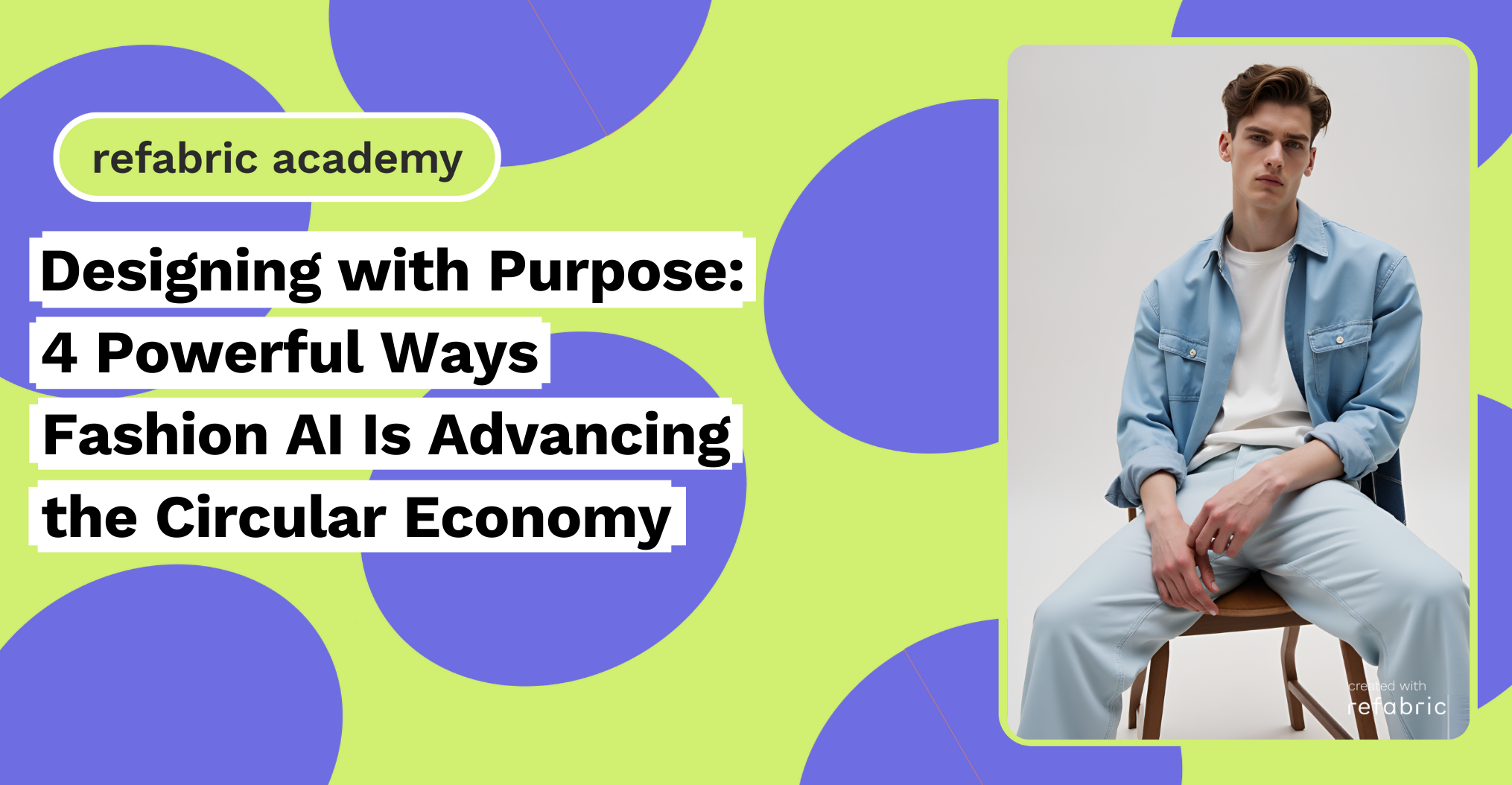As the fashion industry pivots toward sustainability, fashion AI is emerging as a key enabler of the circular economy, reshaping how garments are designed, produced, and reused for a more responsible future. With consumer demand for ethical and eco-friendly fashion on the rise, fashion AI is proving to be a powerful catalyst for innovation, helping brands transition to greener, more regenerative practices.
Rethinking Fashion’s Lifecycle with Fashion AI
The traditional fashion model, design, produce, sell, discard, is being replaced by a circular economy framework that emphasizes resource efficiency, product longevity, and closed-loop systems. Here, fashion AI plays a pivotal role in reimagining every stage of the fashion lifecycle. From intelligent material selection to AI-driven recycling and upcycling processes, fashion AI helps brands design with the end in mind.
By analyzing vast datasets on material durability, biodegradability, and supply chain logistics, AI in fashion design enables designers to choose sustainable textiles and forecast how products will age, wear, or be reused. This data-informed approach not only reduces waste but also promotes regenerative design principles where garments are created to be reborn—through repair, repurposing, or recycling.
Smart Design and Production for a Circular Future
In the context of circular fashion, the production phase becomes more intentional and resource-aware. AI-powered design tools like generative algorithms and 3D modeling software allow for virtual prototyping, drastically reducing the need for physical samples and excess inventory. Designers can visualize, iterate, and test garments digitally, saving time and raw materials while refining aesthetics and function.
Additionally, fashion AI can optimize pattern cutting to minimize fabric waste, predict demand more accurately to prevent overproduction, and even recommend ways to disassemble garments for easier recycling. These efficiencies not only lower costs but also align with environmental goals, making circular fashion economically viable.
AI in Fashion Design: A Catalyst for Sustainability
One of the most exciting intersections of sustainability and technology lies in AI in fashion design. By integrating sustainability parameters into the creative process, AI tools enable designers to make eco-conscious decisions from day one. Whether it’s identifying low-impact dyes, recommending cradle-to-cradle materials, or calculating a garment’s environmental footprint in real-time, fashion AI ensures that sustainable thinking is embedded at the core of every collection.
Moreover, fashion AI can analyze customer behavior to promote product longevity. For instance, it can suggest timeless silhouettes, durable fabrics, and modular designs that adapt over time, thus encouraging slower fashion consumption and reducing the frequency of discard.
AI-Driven Circular Supply Chains
Circular fashion doesn’t stop at design, it extends into how products are circulated and returned. Fashion AI enhances reverse logistics by tracking garments post-sale and enabling brands to reclaim used items through take-back programs or resale platforms. With smart tagging and blockchain integration, fashion AI can authenticate secondhand goods and provide data on their usage history, which increases their resale value and consumer trust.
AI also facilitates garment sorting for recycling by automating the classification of fabrics and separating blended materials, which traditionally pose recycling challenges. By streamlining these backend processes, fashion AI empowers brands to close the loop more efficiently and effectively.
Empowering Consumers Through AI-Powered Transparency
Today’s fashion consumers are more eco-conscious than ever and AI is helping brands meet this demand for transparency. AI-powered platforms can visualize a product’s full lifecycle, carbon footprint, and material origin, allowing consumers to make more informed decisions. This transparency not only builds trust but also encourages mindful purchasing habits, reinforcing the principles of circularity.
Virtual try-ons and AI-generated style recommendations also reduce return rates and the carbon emissions associated with shipping, further supporting sustainable fashion consumption.
The Future of Circular Fashion is AI-Powered
As the fashion industry moves toward a regenerative future, AI stands as a foundational tool in realizing the vision of circularity. It enables brands to design with purpose, optimize resources, and empower consumers creating a fashion ecosystem where sustainability and innovation walk hand in hand.
By embedding intelligence into every stitch, pixel, and shipment, fashion AI is not only making fashion smarter but also more responsible. For brands ready to lead with purpose, the integration of AI into circular design strategies isn’t just an option, it’s the future.
